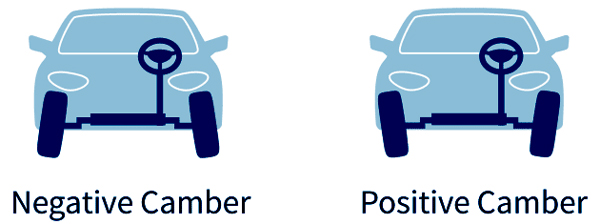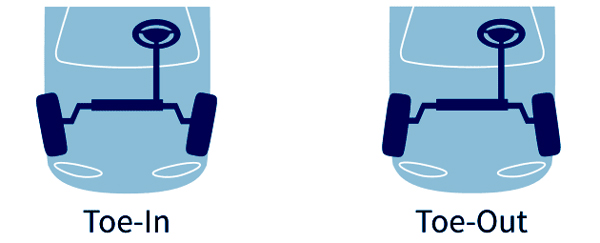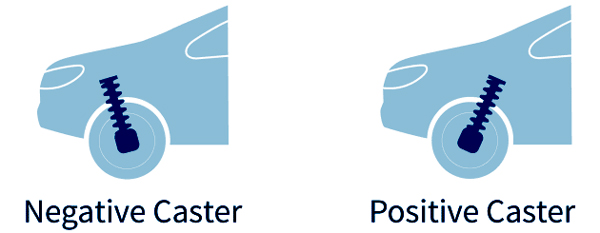Copyright © Shindary Automotive Parts Co., Ltd. All Rights Reserved
Sometimes underinflated tires can cause problems which could also be caused by misaligned wheels. Check the tire pressures first, and if those are within normal limits, then it may be time to have your wheels realigned. The following are symptoms of a bad alignment.
Check your alignment when driving on a straight road with little traffic: remove your hands from the steering wheel and let the vehicle guide itself on the road. If it swerves or drifts toward one particular side, place your fingers back on the steering wheel and lightly maintain control of the steering to stay on the road.
When the vehicle is driving straight once more, try the test again. If the vehicle still veers toward the side, then the wheels need to be realigned. The more it pulls out of a straight line, the worse the alignment is.
If you don’t address the problem, it will be harder to drive straight and you may even cross over into other lanes on the road if you don’t maintain a firm grip on the wheel at all times. If you have this problem with your vehicle, take it to an auto mechanic and have an alignment done right away.
Note that the crown of a road may cause your vehicle to pull to one side as well, since the center of the road is higher than the shoulder.
Whenever you’re driving down a road that is completely flat and straight, the steering wheel of the vehicle should remain straight and not off-center.
An easy way to check this is to look at the emblem in the center of your steering wheel. If the emblem remains level while driving straight, then the steering wheel is centered.
But if the emblem tips a couple of degrees off level in any direction, then the steering wheel is uneven and the vehicle needs a wheel alignment right away. Once the vehicle is realigned, the steering wheel will remain centered and the vehicle will be much easier to control.
A sloppy, or loose, steering wheel can be very dangerous as it can cause a decreased response time when turning. This can be caused by misaligned wheels and should always prompt you to have the vehicle checked out by a mechanic.
A steering wheel that vibrates while the vehicle is in motion is likely due to misaligned or unbalanced tires. However, vibration from a steering wheel could also indicate other more serious problems. A professional can determine the cause of the vibration.
If you notice that the treads on certain tires of your car are wearing out faster than others, the wheels may be misaligned.
Measure the tread depth on both sides of each tire with a tread depth meter for greatest accuracy. Wheels that are properly aligned will all have the same rubber depth on the tires.
As tires wear unevenly due to a misalignment, they can start to squeal as the vehicle accelerates or makes turns. Squealing can be caused by other things such as worn brake pads, so have the vehicle checked if you notice this symptom.
Wheels can become misaligned in many different ways and directions. Here are 3 of the most common types of alignments done.

Camber measures the angle of the wheel when looking straight on at the car from the front. If the wheel leans towards the car with the bottom of the wheel farther away from the car than the top, that is a negative camber. A wheel that leans away from the car has a positive camber.

Toe refers to where the front of the wheel is relative to the back of the wheel. If the front of the wheel points in towards the center of the car, this is toe in, or positive toe. If the front of the wheel points out away from the center of the car, this is toe out, or negative toe.
This type of alignment is adjustable on all cars.

The caster of the wheel measures the angle of the pivot which turns the wheel, while looking at the wheel straight-on from the side of the car. This pivot connects to the wheel by two points, the upper and lower, which should be stacked on top of each other.
If the upper point is leaning towards the back of the car, it’s a positive caster. If the upper point leans towards the front of the car, the caster is negative.
Misaligned caster causes the steering to feel too heavy or too light. This usually cannot be adjusted on front wheel drive cars, so in these vehicles the suspension may be damaged if the caster is off.
These symptoms of misalignment can be easy to ignore, perhaps because drivers think it's no big deal or don't want to spend money on the cost of an alignment. The problem is that the longer you put off getting a realignment, the more damage will be done to the tires and vehicle.
Poor gas mileage is prevalent on vehicles with misaligned tires because the vehicle has to work harder to go where it should and thus consumes more gasoline. Also, tires that you bought with a lifetime warranty often have fine print requiring regular alignments.
Do yourself a favor and take your vehicle to a mechanic or alignment shop if any of these symptoms are present. Wheel alignments are not very expensive when you consider the alternative of damage repair, increased fuel costs, and early tire replacement.
Shindary Automotive Parts Co., Ltd.